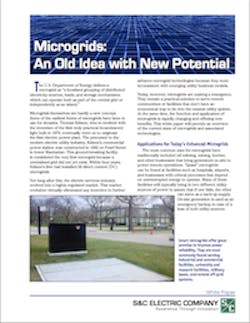The U.S. Department of Energy defines a microgrid as “a localized grouping of distributed electricity sources, loads, and storage mechanisms which can operate both as part of the central grid or independently as an island.”
Microgrids themselves are hardly a new concept. Some of the earliest forms of microgrids have been in use for decades. Thomas Edison, who is credited with the invention of the first truly practical incandescent light bulb in 1879, eventually went on to originate
the first electric power plant. The precursor to the modern electric utility industry, Edison’s commercial power station was constructed in 1882 on Pearl Street in lower Manhattan. This ground-breaking facility
is considered the very first microgrid because a centralized grid did not yet exist. Within four years, Edison’s firm had installed 58 direct current (DC) microgrids.
Not long after this, the electric services industry evolved into a highly regulated market. This market evolution virtually eliminated any incentive to further advance microgrid technologies because they were inconsistent with emerging utility business models.
Today, however, microgrids are making a resurgence. They remain a practical solution to serve remote communities or facilities that don’t have an economical way to tie into the nearest utility system. At the same time, the function and application of microgrids is rapidly changing and offering new benefits. This white paper will provide an overview of the current state of microgrids and associated technologies.
